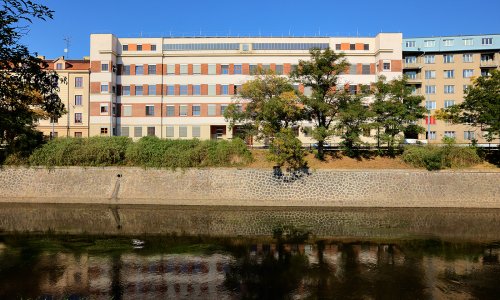Jaroslav Syřiště
Architect and teacher Jaroslav Syřiště was born in Litovice, Kladno district, on 12 May 1878. He studied at the Czech Technical University in Prague. In 1907 he was appointed as teacher and in 1910 as professor at the Brno Polytechnic, where he became the director in 1919. His early works were inspired by cubism (Town Hall in Bučovice, 1913), rondo cubism and national decorativism (the Orel Association's assembly grounds at Bauer Ramp in Brno, 1922, Private Officers' Sickness Fund on the corner of Kounicova and Zahradníkova streets, 1923-25), and he also drew inspiration from geometrical Art Nouveau and Dutch architecture. The designs for his own villa in Březinova Street in Brno - Žabovřesky and one of the buildings in the New House estate reveal functionalist tendencies. In 1926 Jaroslav Syřiště was appointed the head of the civil engineering department at the Czech University of Technology in Brno and became the dean for the field of civil engineering a year later. He held the post of dean of the Faculty of Architecture and Civil Engineering in 1929-31 and 1937-38. In 1939 he became the rector of the Czech University of Technology in Brno and remained in the position until the Nazis closed down Czech universities; he returned to the function after WWII. In 1948 he retired for health reasons, but continued to lecture at the university. He died in Brno on 20 September 1959.
Architect
Jaroslav Syřiště
Date of birth
12.5.1878 Litovice
Deceased
20.9.1951 Brno
Literature
Jana Osolsobě,
Bulletin Moravské galerie v Brně,
Brno 2003, p. 306–317
Adéla Horová,
Nová encyklopedie českého výtvarného umění,
Praha 1995


